Title: Flow with the Flock Year: 2014 Place: Taurus Mountains (Turkey) Author & Copyright: Eda Elif TIBET
BLENDING ELEMENTS AND FADING COMMONS: Sarikecili of Taurus mountains and Koçers of Karacadag mountains, Turkey
Middle Eastern transhumant shepherds are rich in what they know about moving, about settling temporarily. When it’s bare and dry they survive, when it’s green and lush they prosper. Some Kurdish tribes such as the Koçers settle in the Karacadag mountains of South East Turkey, some others like the Sarikecili, do so in the Taurus Mountains in Southern Turkey overlooking the Mediterranean. They move every year on foot with their families and livestock, over hundreds of kilometres to their summer pastures. These populations and their flocks of goats and their horses preserve several precious ecosystems and lands biologically enrichedthrough their transhumant movements that distribute seeds and format the landscapes throughout their journeys… But when not actively threatened, they are then left abandoned, while the changing world increasingly endangers them. This is their story which blends in with the natural elements and the struggle for survival.

Title: Feeding is our duty
Year: 2016
Place: Karacadag (Turkey)
Author & Copyright: Gül Ertunan KARAASLAN
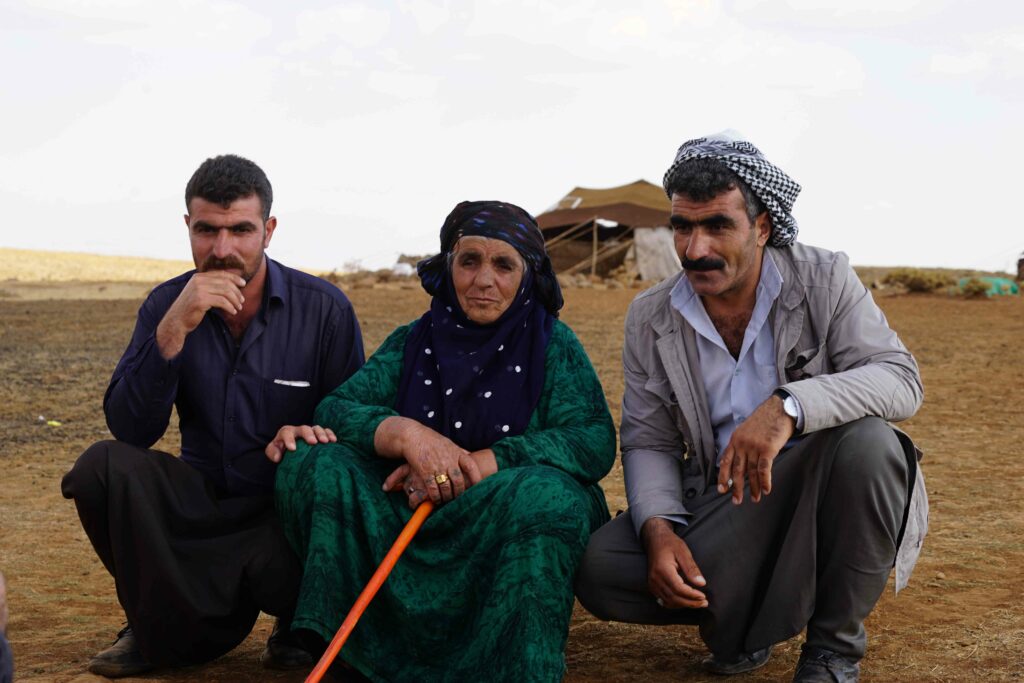
Title: The land is our Mother
Year: 2016
Place: Karacadag (Turkey)
Author & Copyright: Gül Ertunan KARAASLAN
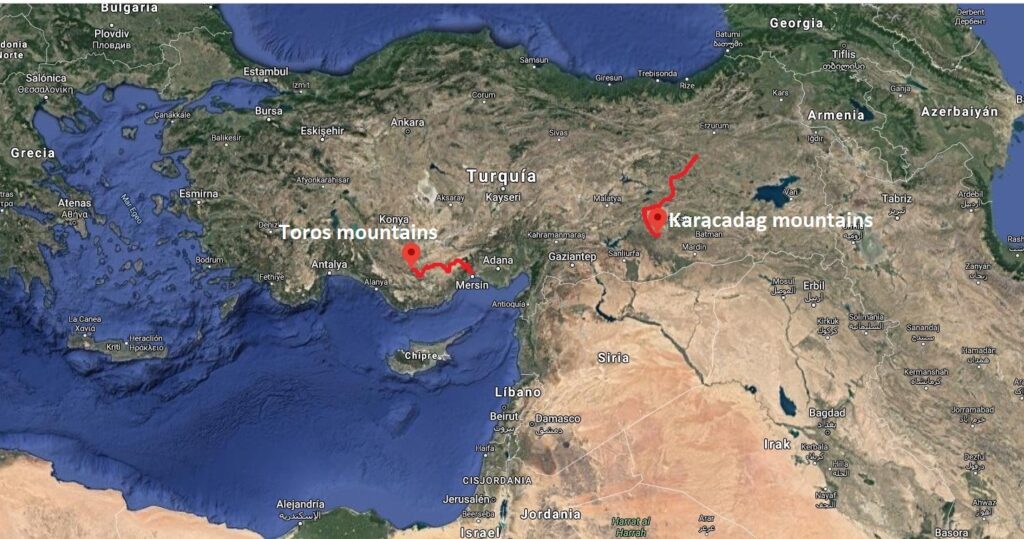
Title: Position of the two pastoral highlands and their transhumant roads
Year: 2021
Place: Toro Mountains and Karacadag Mountains (Turkey)
Author & Copyright: Pablo Domínguez (inset courtesy of Google Earth Engine).
Earth
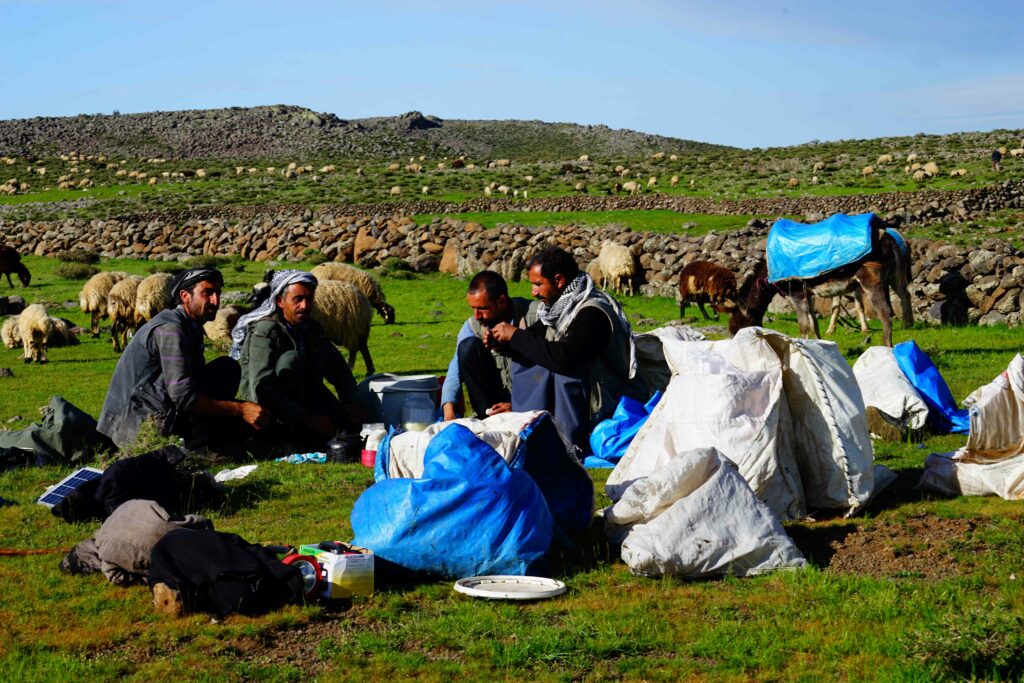
Title: Common and community
Year: 2016
Place: Karacadag (Turkey)
Author & Copyright: Gül Ertunan KARAASLAN
For transhumant populations, land is not a synonym of terrain: they lack this sense of sedentary property. Earth is the path in the woods, the imperturbable cliffs, the fungus and the pine trees and finally… the grasslands. It is wherever they can plant their yurt (tent). The Sarikecili tribe has a mobile population of 170 to 180 yurts, each comprising approximately one family, who they bring with them wherever they move, together with their goats and sheep. Just like their ancient species of goats (Capra Aegagrus Hircus, known to be living in Anatolia since 7200 BC), they adapt to harsh climatic conditions. But however well they may have adapted to the ways of nature through the centuries, there’s little to be done when it comes to national borders and conflicts. Most common pasturelands of the Kurdish transhumants have been divided among four countries: Syria, Turkey, Iraq and Iran. These borders have significantly reduced their movements and the territories that provide their livelihood, and made it increasingly difficult for them to access their pastures that are their life, making the challenges they face increasingly redoubtable.
Middle Eastern transhumant shepherds are rich in what they know about moving, about settling temporarily. Some Kurdish tribes like the Koçers settle in the Karacadag mountains of South East Turkey, some others like the Sarikecili do so in the Taurus Mountains in Southern Turkey. They move every year on foot with their families and herds, over hundreds of kilometers to their summer pastures.
For transhumant populations, land is not a synonym of terrain: it is wherever they can pitch their yurt and pasture their herds. Unfortunately, their pasture lands are now divided among four countries: Syria, Turkey, Iraq, and Iran. Such borders negatively impact their main form of livelihood, making their moving more challenging than it used to be.
Fire
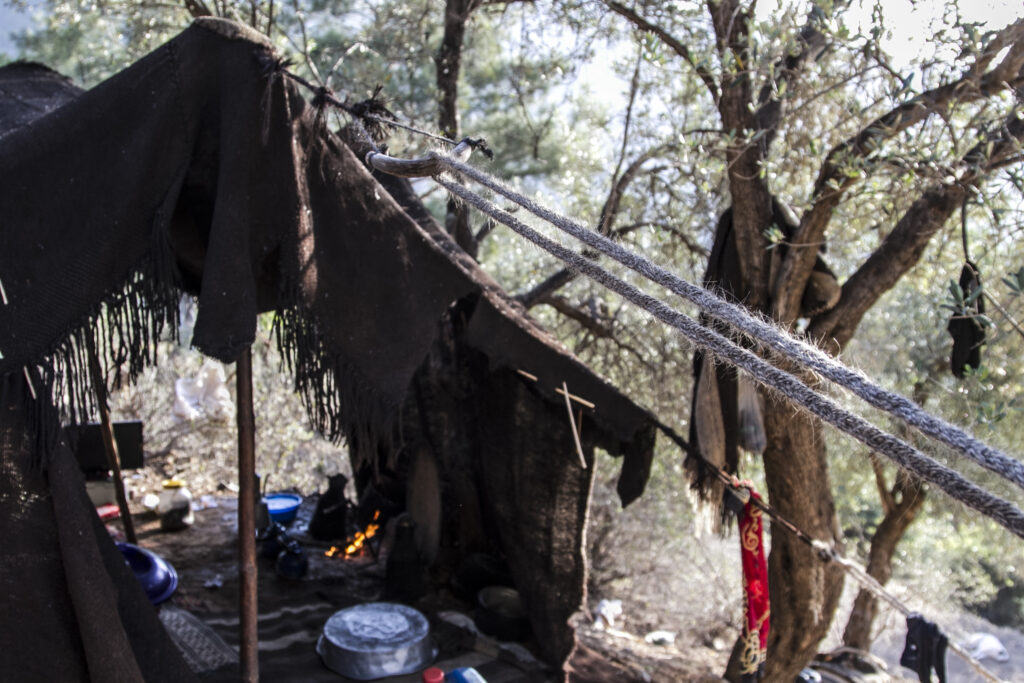
Title: Home is where Yurt is
Year: 2014
Place: Taurus Mountains (Turkey)
Author & Copyright: Eda Elif TIBET
Transhumant goats keep traditional paths safe, leaving the right amount of shrubs to be conserved for further propagation, while dispersing the seeds over vast areas through their manure. They open corridors as they walk through the pine forests, they eat a large part of the inflammable vegetation, and protect society as a whole. And in spite of all that, they are blamed for the wildfires, which they, in fact, keep in check! Using goats as scapegoats ~ isn’t it ironic? Couldn’t it be that the cause of fires and erosion of these areas, not to mention drought and desertification, is actually related to the hurdles imposed on mobile pastoralism?
Transhumants are often blamed for the frequent wildfires in the area. But the truth is the exact opposite: they keep traditional paths safe, through their goats and sheep eating a large part of the inflammable vegetation and leaving the right amount of shrubs to be conserved for further propagation, while dispersing the seeds over vast areas through their long journeys.
Water
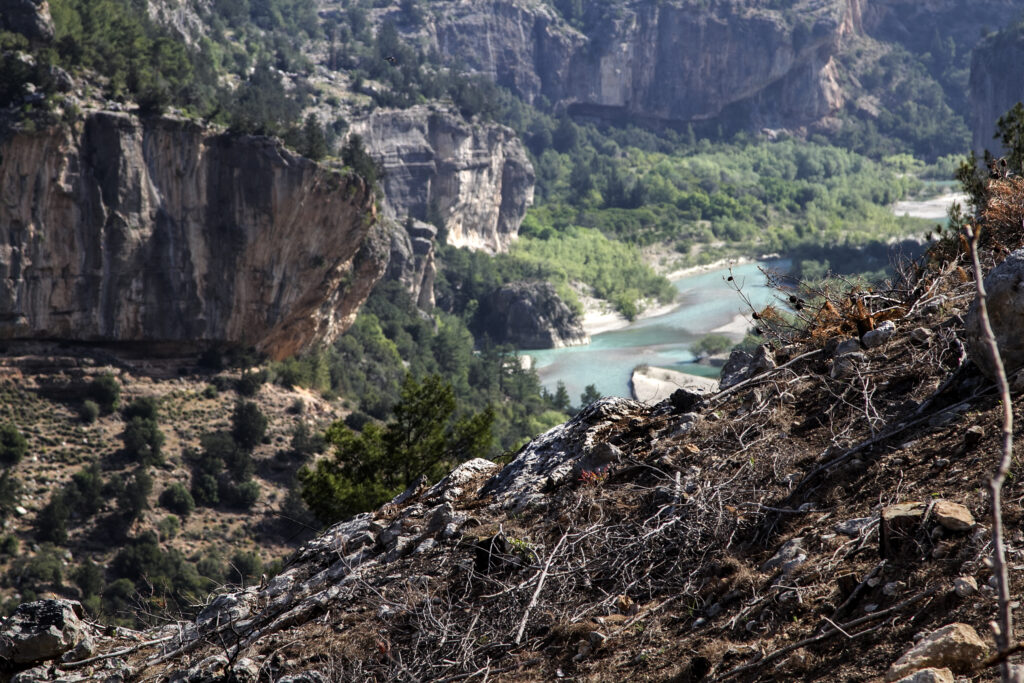
Title: In a Hunt for Culprits
Year: 2014
Place: Göksu River, Taurus Mountains (Turkey)
Author & Copyright: Eda Elif TIBET
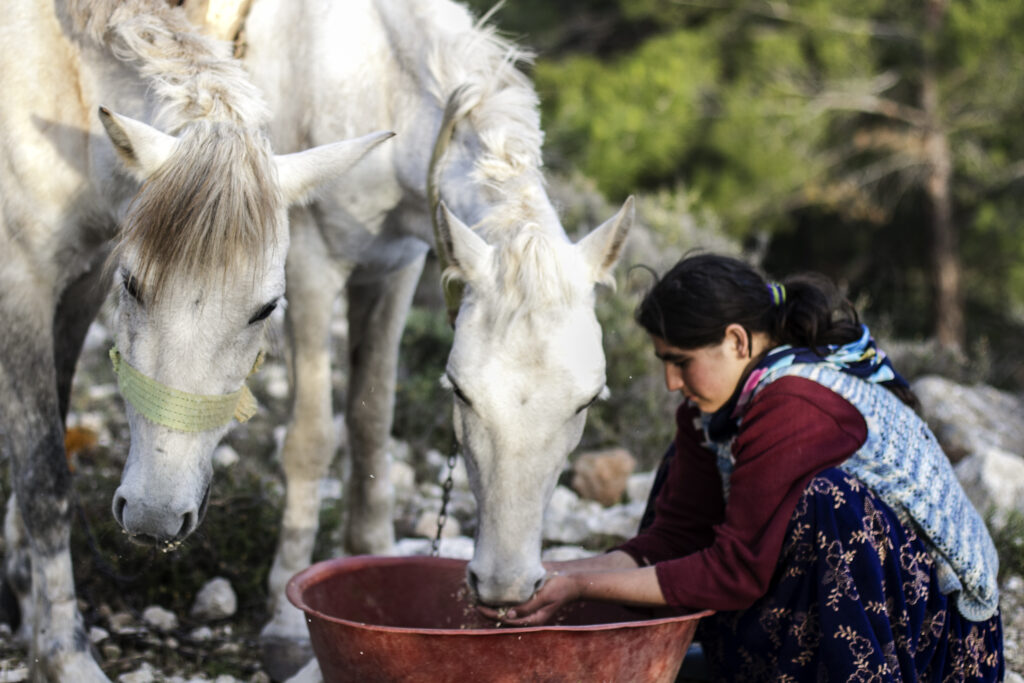
Title: Sentient Unity
Year: 2014
Place: Taurus mountains (Turkey)
Author & Copyright: Eda Elif TIBET
Water used to run parallel to the traditional paths of nomads. Drought, intensive agriculture, and flows diverted by hydroelectric plants and dams have now upset the balance, forcing families to store water in mobile tanks and to pass through motorable ways that are very dangerous for them and their animals. It used to cross their paths. You could see it when the forest opened into a valley. Goats and horses, and camels before them, would smell it, and find it naturally. People walking with them could count on finding water, but now water sources have disappeared almost everywhere. Drought, intensive agriculture, diverted flows caused by hydroelectric power plants and dams, have upset the balance. Now, families need to store water in mobile tanks, which makes it very hard to follow ancestral routes. They need to go along motorized roads, which are dangerous for them, and their goats. They say, in the future, water is going to be more precious than gold. Here, it has already become so.
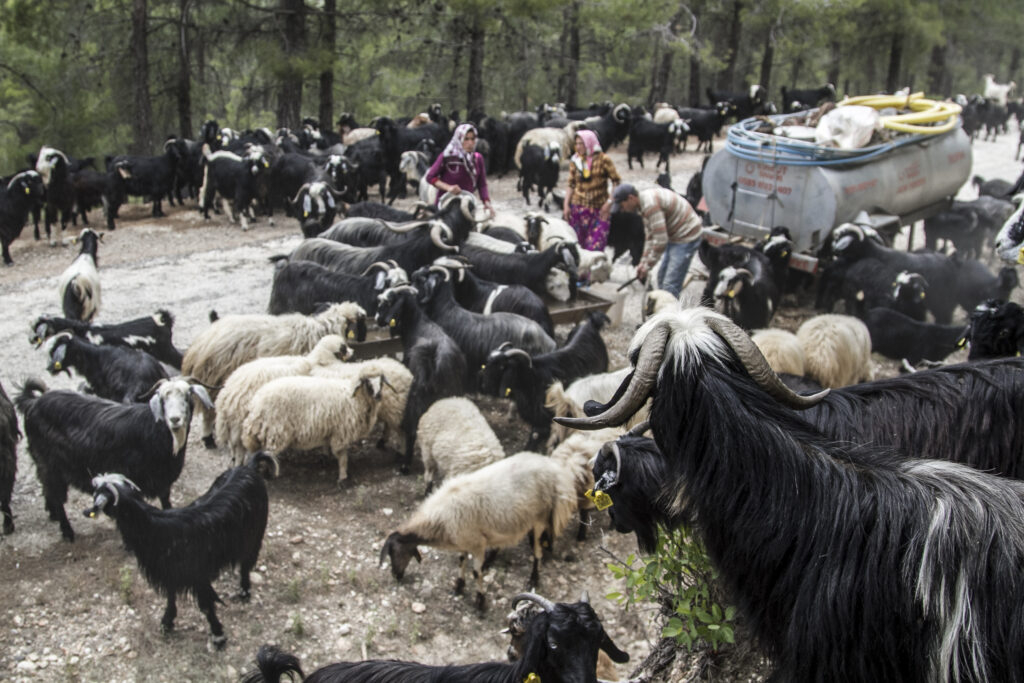
Title: Water Tank
Year: 2014
Place: Taurus mountains (Turkey)
Author & Copyright: Eda Elif TIBET
Air

Title: The loss of the commons and desertification
Year: 2016
Place: Karacadag (Turkey)
Author & Copyright: Gül Ertunan KARAASLAN
For however volatile they are, transhumant populations are repositories of a deeply rooted tradition. They cannot simply disappear or stop and settle. During the winter, they are forced to accept the conditions of landowners, who increasingly demand large sums of money in exchange for hospitality. But when they are on their own, they remain as free as air!
These populations and their herds preserve precious ecosystems and lands. But when not actively threatened, they are then left abandoned without no or very little help from the state, while the changing world increasingly endangers them. This is their story which blends in with the natural elements and the struggles for survival.

Title: Future’s premises and promises
Year: 2016
Place: Karacadag (Turkey)
Author & Copyright: Gül Ertunan KARAASLAN
Title: Hey Goat!
Year: 2014
Place: Taurus Mountains, Turkey
Author & Copyright: Eda Elif Tibet & KARMAMOTION
Web Site: https://www.karmamotion.com/hey-goat
Full film: https://youtu.be/VjzkQgfqCGQ
Acknowledgements
We would like to thank the Gök family members (Sarikecili) and our Nature Culture project leader, Dr. Banu Aydinoglugil and team member Mithat Marul for their valuable support and guidance throughout the transhumance journey we have taken together in the Taurus Mountains. We thank KARMAMOTION for documenting the story of the Gök Family and making it accessible to a wider public. We acknowledge the contribution made by the Doga Foundation in Turkey and the Mediterranean Consortium for Nature and Culture and the MAVA Foundation for their financial support throughout this journey.
We would also like to thank Sedat Kiran, Hamza Agan, Casim Agan, all the Kejan tribe and Kocer Association for sharing their journeys and traditions with Gül Ertunan KARAASLAN.
Text and composition by Eda Elif TIBET, Gül Ertunan KARAASLAN, Büsra SAHIN and Pablo DOMINGUEZ.
